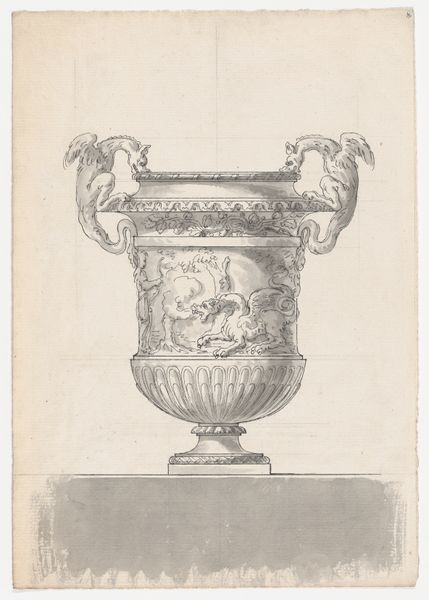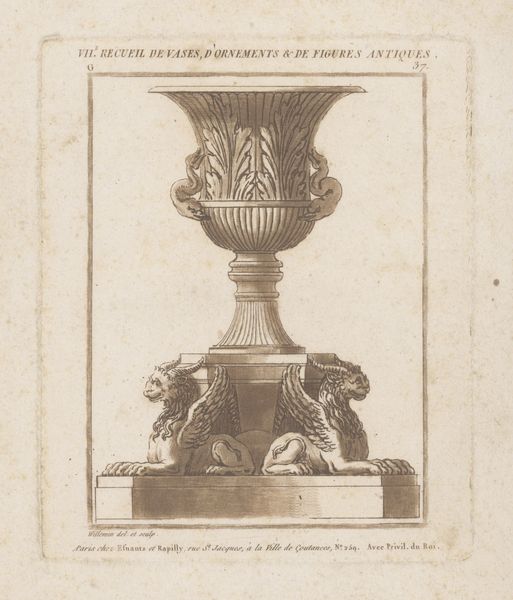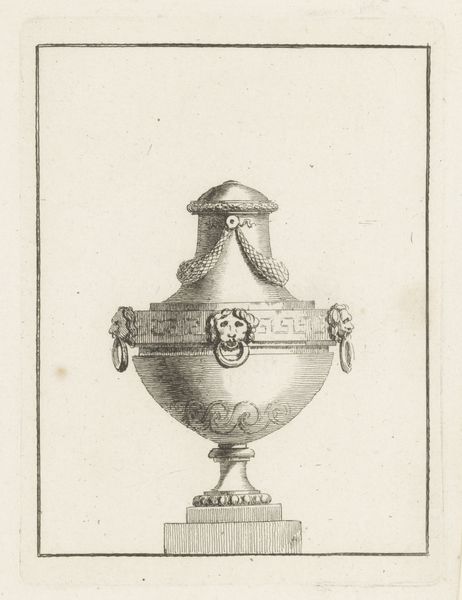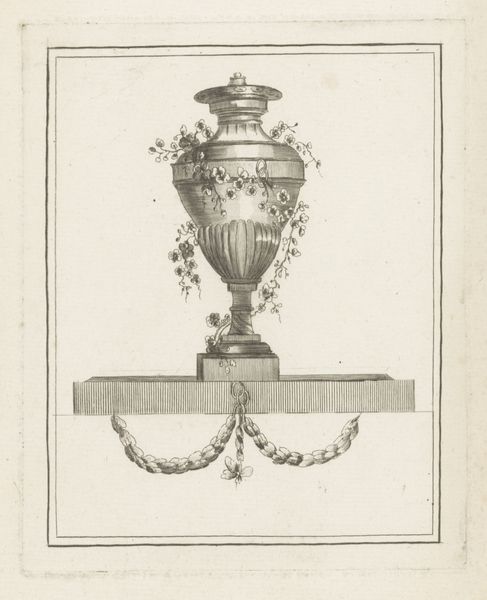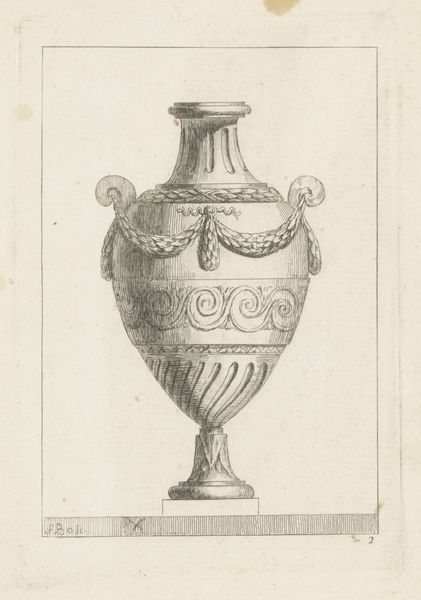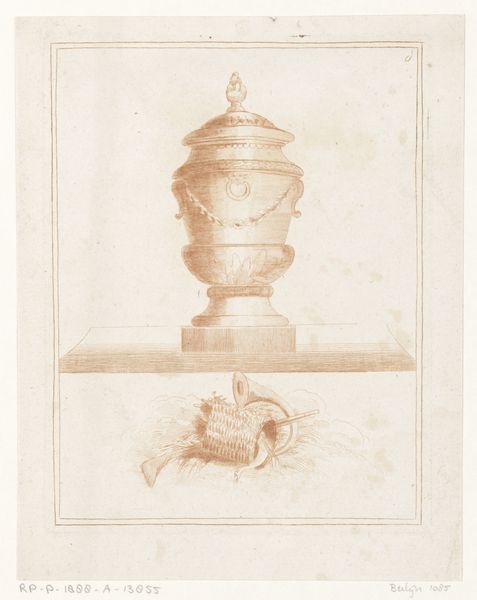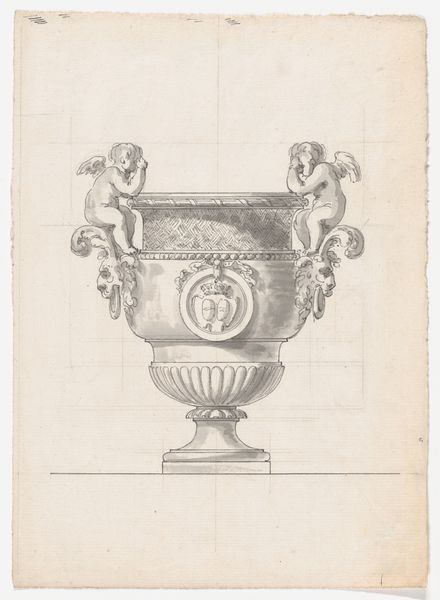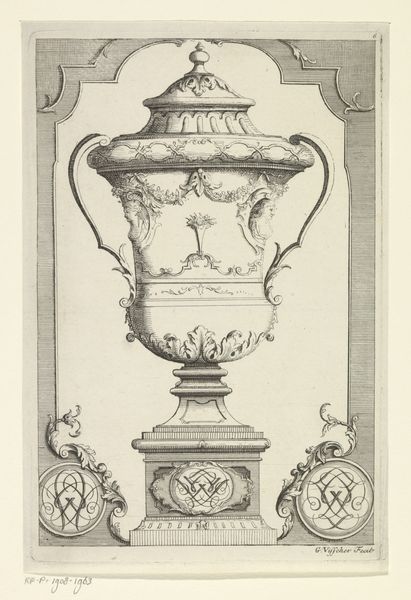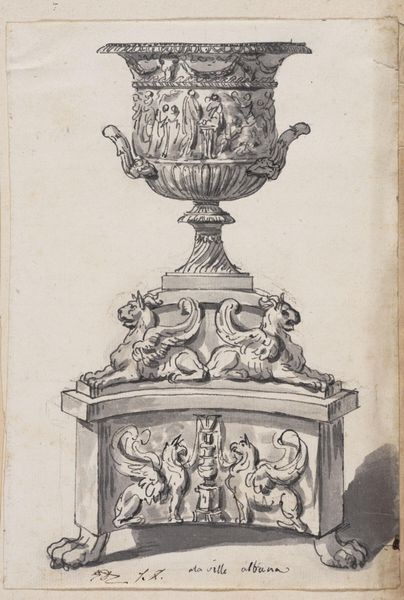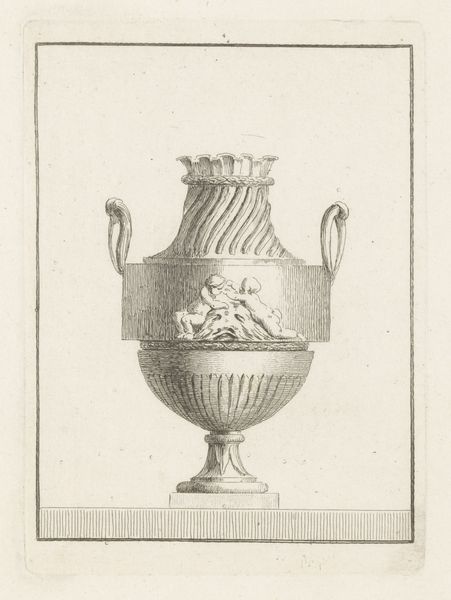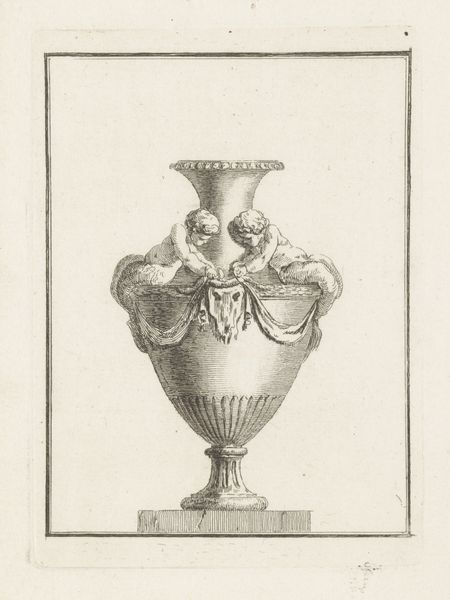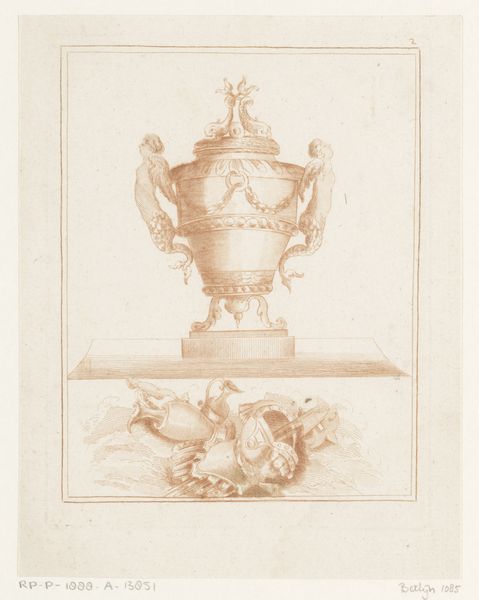
Dimensions: height 166 mm, width 135 mm
Copyright: Rijks Museum: Open Domain
Curator: Welcome. We're looking at an engraving called "Vaas en masker met slangen," or "Vase and Mask with Snakes," dating from around 1770-1780. The artist is anonymous, and it's part of the Rijksmuseum's collection. Editor: It’s striking! That gaping mask underneath the classically rendered vase is just… loud. The whole image is composed in a very linear fashion, the terracotta color creating this overall austere but oddly compelling feeling. Curator: Indeed. The composition reflects a broader artistic interest in decorative arts prints during the late 18th century, catering to craftsmen and artisans. The rigid geometric lines reflect enlightenment sensibilities of clarity and order. It's designed almost like a template for design work. Editor: I find the tension fascinating. The vase, adorned with those delicate garlands, represents elegance, order and refined taste. Then you have the mask below with a rather wild expression, framed by twisting snakes which typically represent chaos or hidden knowledge, creating a juxtaposition that feels deliberate. It hints at hidden, darker, more instinctual energies bubbling beneath a civilized exterior. Curator: The mask can certainly be interpreted as a visual device to disrupt that conventional decorative harmony. Printmaking had become increasingly specialized and commercialized, allowing for subversive artistic statements within established genres. These are not typically personal artistic expressions, but serve some political function and engage with some socio-political dialogue. Editor: Do you think this tension was intentional? Perhaps commenting on the artificiality of purely aesthetic pursuits, especially given that era's social upheaval? It almost feels like the scream of the disenfranchised straining against societal expectations. The image reminds me that what society often considers chaos can be suppressed, but never destroyed. Curator: Well, while individual interpretations vary, we can understand this period in European printmaking as tied to class aspirations and the popular dissemination of ideas of 'taste.' Editor: It leaves us contemplating beauty's dual nature. What is above and beneath, within and without. It goes beyond a design study. Curator: I agree, and through it, it shows us much of its own time. Thanks for sharing. Editor: Absolutely. My pleasure!
Comments
No comments
Be the first to comment and join the conversation on the ultimate creative platform.
